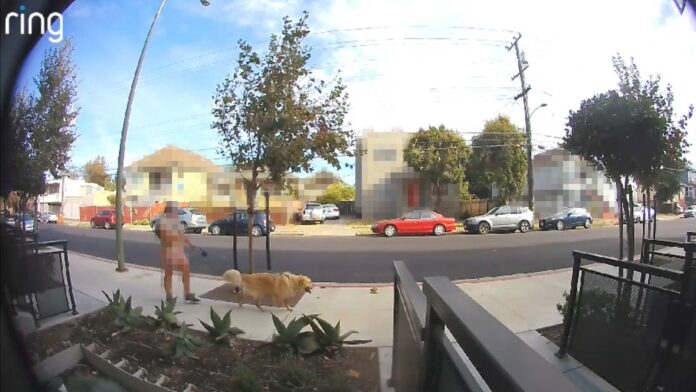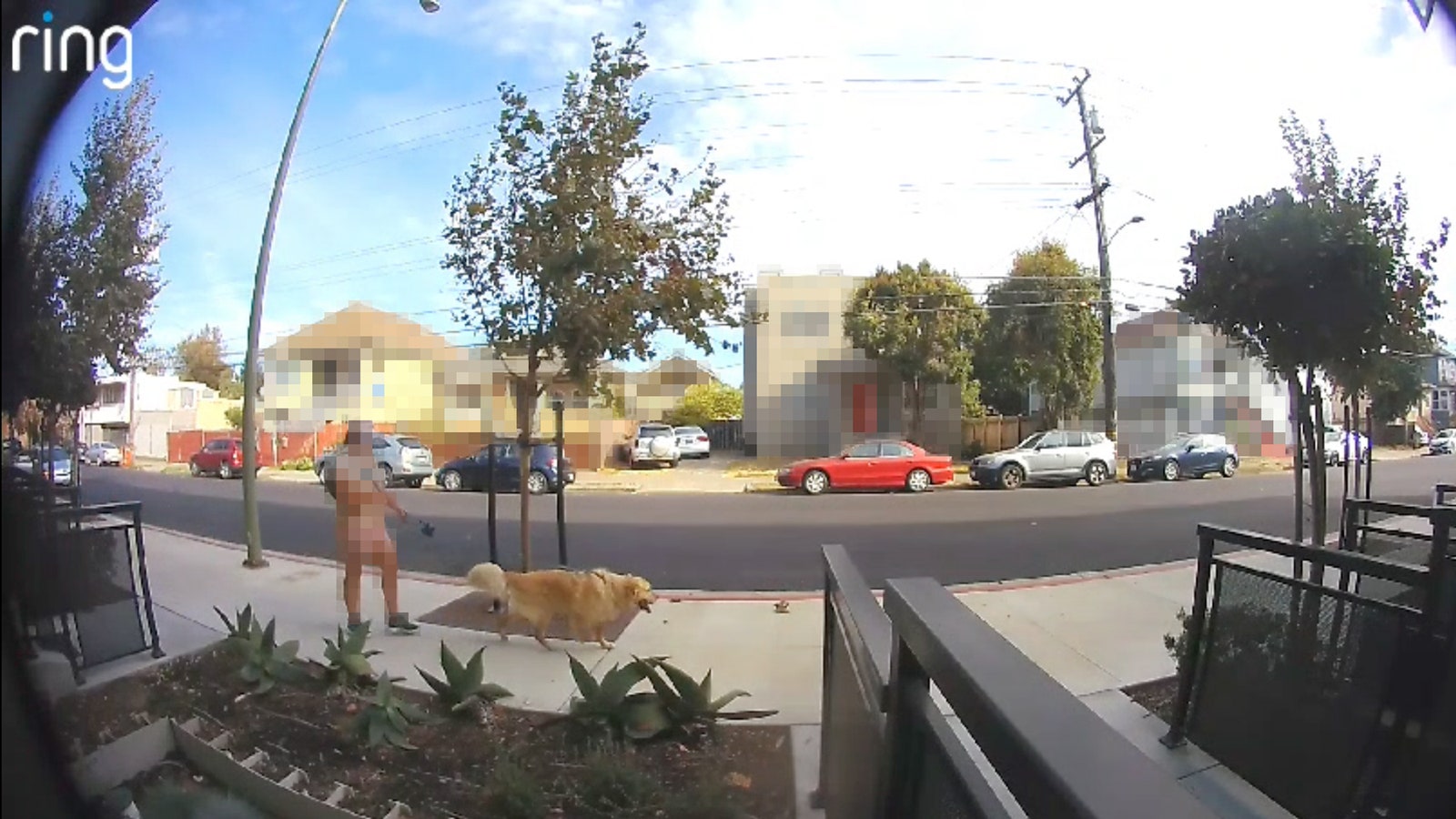Liz Hamren, the CEO of Amazon’s Ring camera business, often wonders whether her husband remembered to grab the package of frozen goods that is regularly delivered to their home. She could nag him, or she could check the footage from their Ring.
Historically, the latter option required her to tediously swipe through a video timeline in Ring’s app to identify if and when the box was picked up and by whom. But in recent weeks, Hamren has been able to let AI do the searching. She types “package today” into the app and right away can see the clip of her husband completing his duty, assuming he has.
Ring’s new Smart Video Search capability, which the company announced today, is rolling out by November 5 to all of its Home Pro subscribers, who pay $20 monthly or $200 annually. WIRED tested the feature over the past few days. It couldn’t help answer the recurring question in our home: “Did you remember to lock the door?” But searches for “dog pooping,” “gardeners,” and “rollerblading” brought up mostly accurate results.
Hamren, who also oversees three other Amazon home technology units, says Ring blocks searches for content it considers “offensive, inappropriate, or harmful.” She declined to elaborate beyond saying that names of weapons and “qualitative terms about people or situations” are among those barred.
Our searches for terms some may consider sensitive, including “Black,” “turban,” and “gun,” yielded no results despite there being footage matching those descriptions. “Disabled” returned people scooting by in wheelchairs—and mothers pushing strollers. Ring notes it will now block searches for “disabled” due to the risk of misuse.
Still, the search capability marks a big upgrade for Ring, which over the past decade popularized home surveillance through its video doorbells and a growing suite of other security gadgets. The issue has been that millions of Ring users have been stuck with a massive library of footage—potentially up to six month’s worth—with minimal features to easily mine the information within it. Hamren, a former Microsoft and Meta hardware executive who joined in March 2023, wanted to bring users insights without them having to fiddle around too much. AI made that possible.
Hamren’s reign at Ring also has brought a significant shift in the company’s pitch to potential customers. “Tough-on-crime” ads showing suspicious characters disappeared. She pulled back on partnerships with police, which had seen Ring develop tools for users to easily share videos with law enforcement agencies without them having to obtain a warrant.
Ring’s marketing today features adorable footage involving pets and children, and users are encouraged to share whimsical videos to their online communities, not just the serious ones. The focus is no longer on curbing crime but rather on reducing anxiety by allowing customers granular insight into what unfolds in front of the camera.
Search is just the start. The new AI models powering search, Hamren says, will eventually enable Ring to notify users about specific situations, such as a bear wandering the backyard or anomalous puddling on the patio. They’ll also receive summaries of recent happenings. “Providing you intelligence and context about what’s happening is ultimately where we want to go,” she says.
Homes are just one location in her sights. In the first half of 2025, Ring plans to launch a subscription plan aimed at small and medium-size businesses. Hamren says subscribers would be able to better oversee multiple locations and give staff access to certain footage.
Search Trials
Smart Video Search has been in development for well over a year, Hamren says. The AI system was trained using a technique called contrastive learning to recognize packages, people, vehicles, animals, weather, and actions such as running. “The things that people really care about,” she says. The company trains using public videos and those shared by employees and their friends, according to Ring. Competitors, including Nest and Wyze, are pursuing or testing similar search tools.
Ring is putting search behind its most expensive subscription because it requires significant cloud computing to power, and the company, which became profitable last year, wants to stay that way, Hamren says. She adds that focusing on what users will pay for makes for a “very straightforward relationship.”
Users on Ring’s Home Pro plan can opt into the search experience and choose which of their cameras to include—it works with all versions. But search doesn’t work if users have turned on end-to-end encryption, which is a higher form of privacy for their videos. Hamren says Ring is working to remove that limitation, though she didn’t specify a timeline. Searches are not logged in users’ accounts, but anonymized search terms may be tapped to try to improve the feature, according to Ring.
Ring’s search works much like searching YouTube for a video. Results can be filtered by relevance or time. The system can pick out types of vehicles (like “police” or “minivan”), but don’t expect it to tell a Kia apart from a Mazda or read a specific license plate. “We’re not currently focused on license plate reading,” Hamren says. The company also isn’t planning to offer facial recognition. Though increasingly deployed by governments and businesses, facial recognition continues to draw concerns about mass surveillance and the potential for misidentification. Hamren says Ring would reconsider based on user demand for the technology.
In WIRED’s tests, Ring’s search worked decently well on queries including “backpack,” “scarf,” “speeding cars,” “ice cream truck,” and “shopping cart.”
But for many searches, the results were filled with understandable misidentifications. The software interpreted headlights bursting into view from turning cars as “fireworks.” “Blonde women” delivered people fitting the description but also golden retrievers. To the AI, anyone with a hand near their face seemed to be “smoking.” Hamren expects feedback to lead to updates.
Other kinks were more odd. “Purple hair” included someone in a purple sweater and a bus with purple paint. Ring wouldn’t identify a decorative pumpkin but associated with the gourd an orange-vested landscaper who was bundling leaves into a white sack. “Rollerblades” correctly pulled up someone skating about, but “roller blades” (with a space) brought up nothing, because Ring associated “blade” with weaponry.
Our efforts to have the camera recognize someone swinging a wooden baseball bat or carrying a hammer all failed. (“Hammer” results included a leaf blower and hedge trimmer.) “Water gun” brought up two instances of people wielding water guns, but “gun” did not.
Hamren says she was impressed that a search for “volleyball” in her tests picked up someone dressed in a generic volleyball uniform. But WIRED couldn’t get Smart Video Search to spot the name of a football team on a shirt, because the feature doesn’t directly recognize text.
What we found most striking about the search tool is the simultaneous creepiness and serendipity of being able to know what’s going on during the long stretches during which there isn’t a reason to proactively review footage. We found ourselves with deep insight into the various ways a particular dog relieves himself. The number of nights a family of raccoons, who came up in a search for “bat,” passed by was equally amusing. How these facts calm nerves or leave someone feeling more connected isn’t clear. Search certainly opens the door to ever more Ring videos going viral—and users will likely find it helpful as it improves.
Hamren acknowledges that search hasn’t quelled her every wonder yet. How one of her backyard tiles got stained remains an open case. Turns out, her camera wasn’t well positioned to capture the mystery incident. For now, a problem AI can’t solve.
Source : Wired







